In this study samples were taken from 20 different individual Black Locust trees belonging to a single patch of Black Locust and Black Cherry trees located in northern Italy. This is how the patch looked before felling:
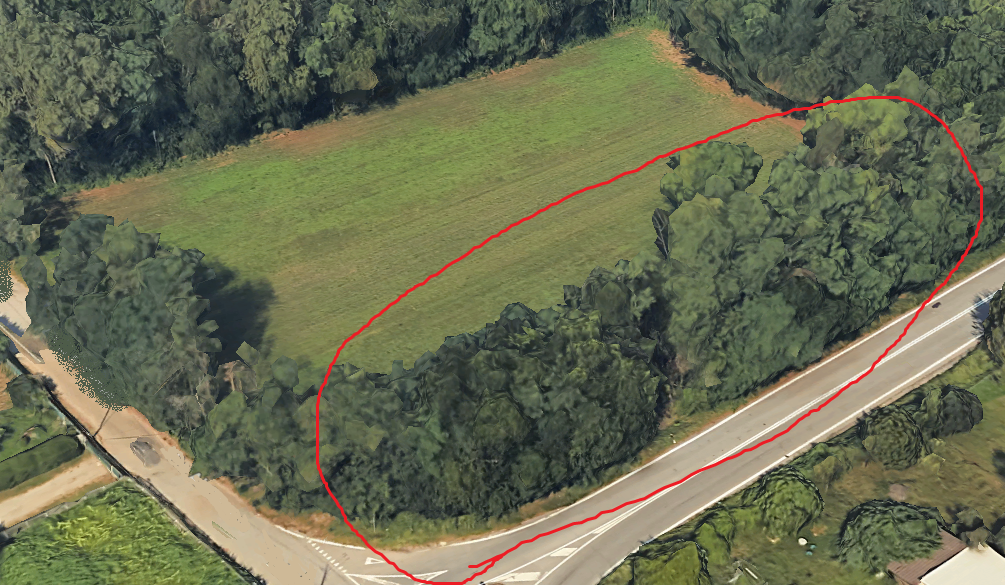
… and just after felling:
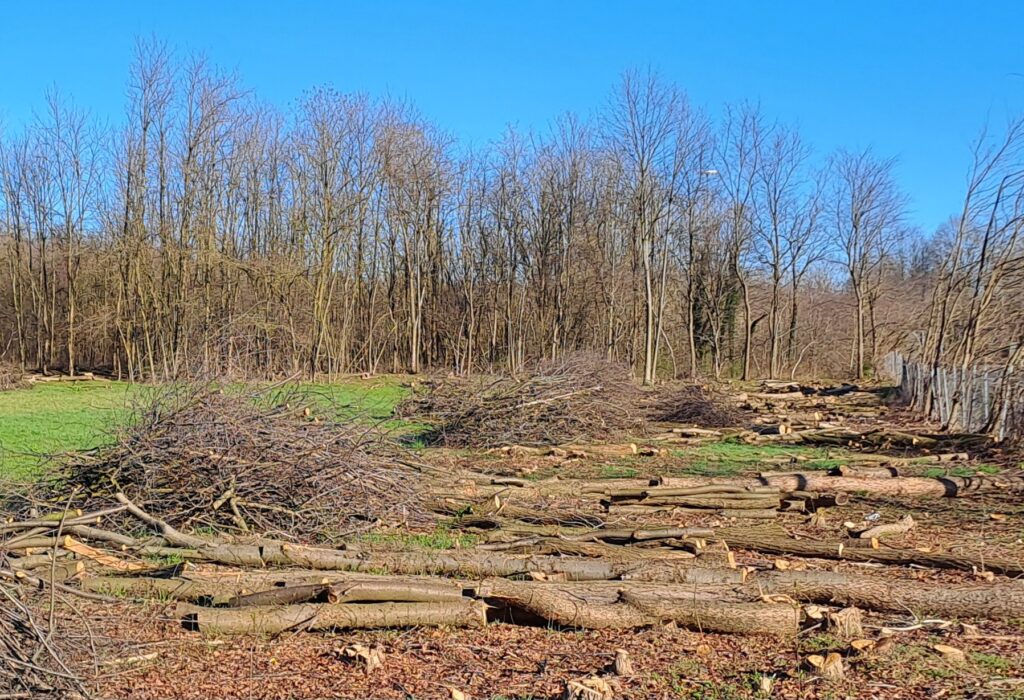
The chatoyance summary chart below shows that:
1) Data are quite consistent within each individual tree
2) Both riftsawn and flatsawn samples can reach low or high values
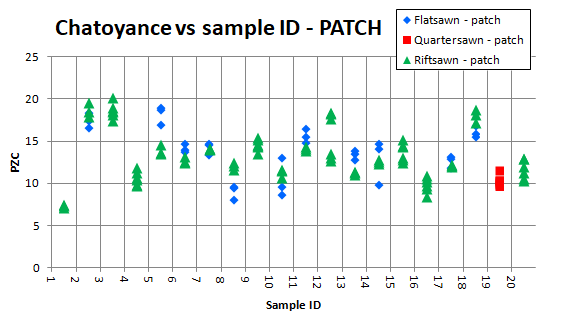
Surface brightness is also compared, showing again consistency within each tree, while samples out of some trees are significantly darker:
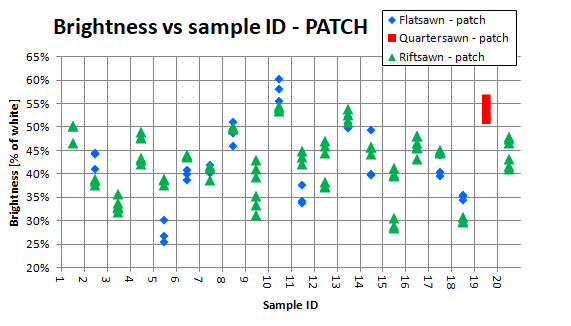
Chatoyance was compared to surface brightness showing that, in general, darker pieces appear more chatoyant:
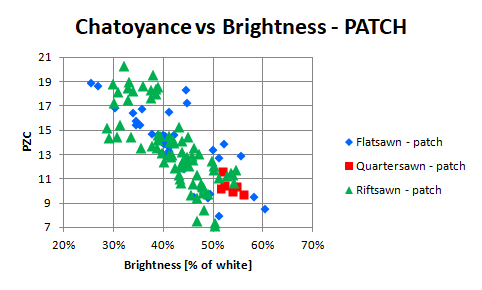
Data from this patch of trees were compared to data from 15 more individual trees located in many different areas (various parts of Italy, Germany, Belgium, US).
The chatoyance summary chart shows that
1) results from this patch are generally lower (average 13.4 vs average 17.7)
2) average on each individual tree within this patch ranges from 7.4 to 18.1, against a range of 10.4÷23.1 for other trees
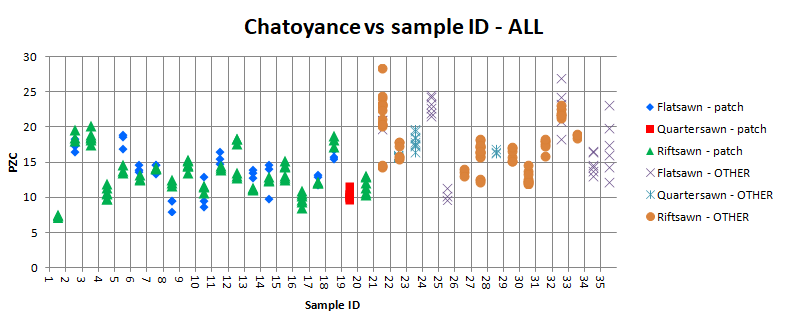
Brightness on this patch is also generally higher; could this be related to wood aging or oxidation?
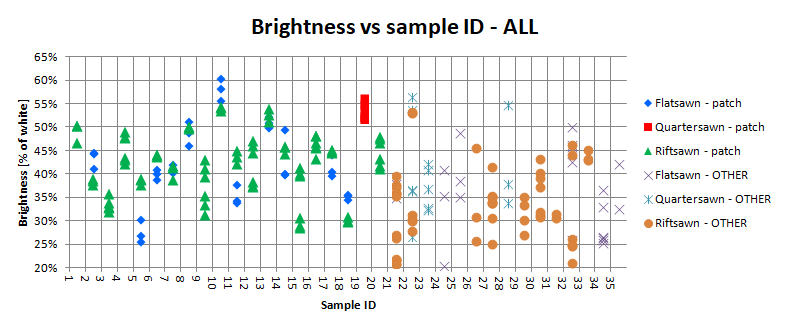
The general trend is again visible, even if less evident, on the whole population:
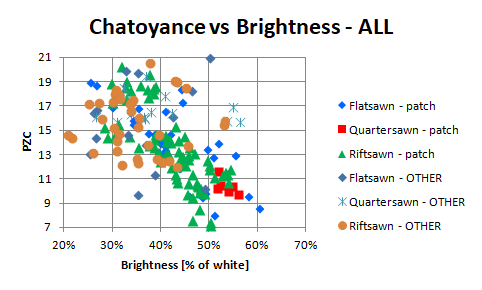
GIFs below provide some examples:


